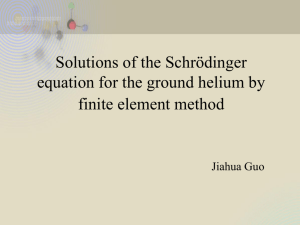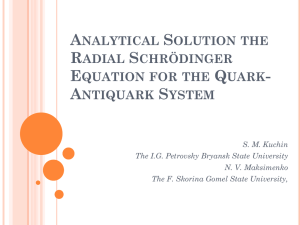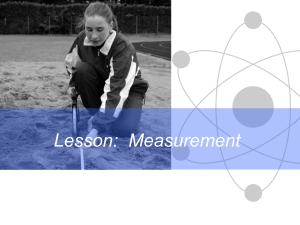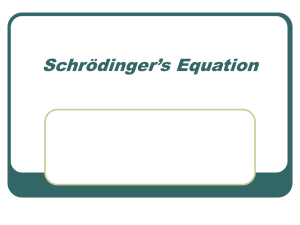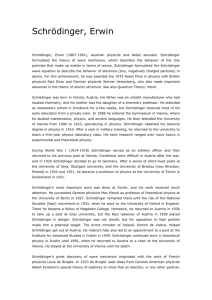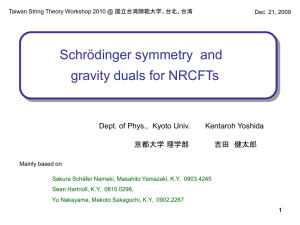powerpoint - University of Illinois at Urbana
advertisement
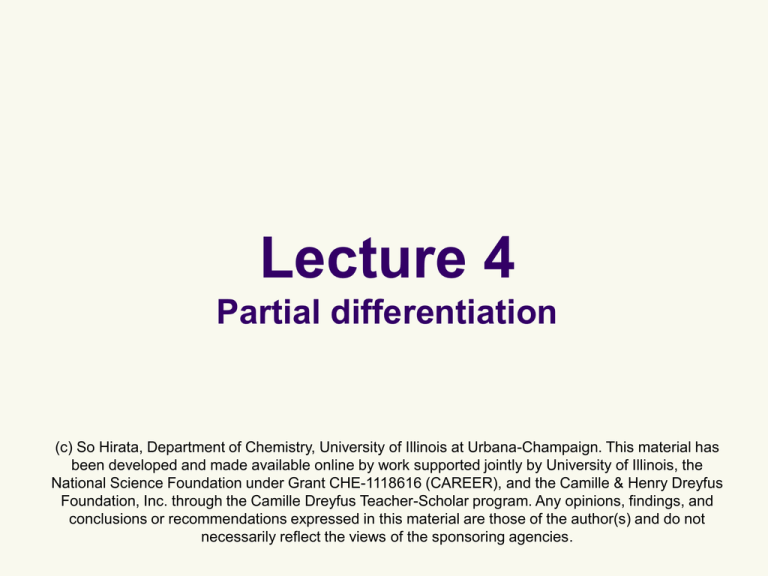
Lecture 4 Partial differentiation (c) So Hirata, Department of Chemistry, University of Illinois at Urbana-Champaign. This material has been developed and made available online by work supported jointly by University of Illinois, the National Science Foundation under Grant CHE-1118616 (CAREER), and the Camille & Henry Dreyfus Foundation, Inc. through the Camille Dreyfus Teacher-Scholar program. Any opinions, findings, and conclusions or recommendations expressed in this material are those of the author(s) and do not necessarily reflect the views of the sponsoring agencies. Partial differentiation In quantum chemistry, we often deal with a function of more than just one variables, for example, f(x,y,z). When considering the derivatives of a multivariable function, we must be aware of with respect to which variable we are differentiating the function. f is used to indicate the derivative is with respect to z, and x and y are z x, y held fixed in the differentiation. Partial differentiation ∂ (round d) indicates the partial differentiation. Consider a function of space (x) and time (t) variables, f(x, t). Let the space variable also depend on time x = x(t). In this case, a partial derivative of f with respect to t is different from the exact derivative because df ( x, t ) f f dx f dt t x x t dt t x Partial differentiation Other than that, partial differentiation follows essentially the same rules as usual differentiation. æ dy ö æ dx ö 1 çè dx ÷ø = çè dy ÷ø is true Is this true? y x x y YES and NO - this is only true if the variables held fixed are identical in the left- and righthand sides. -1 Partial differentiation Consider the change in function f(x,y,z) caused by an increase in x (y and z held fixed) and then in y (x and z held fixed). The result would be the same if we increase y first and then x. f f xy yx 2 2 Partial differentiation f f xy yx 2 2 Partial differentiation f ( x, y) ax y by 3 f 2 3ax y x y f 2 3ax yx 2 2 f 3 ax 2by y x f 2 3ax xy 2 Time-dependent Schrödinger equation We use partial derivatives for operators. For example, the energy operator is, E i t x , y , z We do not differentiate x, y, z dependent part of the wave function by t (see the simple wave in the previous lecture) Time-dependent Schrödinger equation The time-dependent Schrödinger equation is: ˆ H i t x, y , z The Schrödinger equation For one-dimension, it is 2 2 é ù d ˆ ˆ HY = ê + V (x)ú Y = EY 2 ë 2m dx û The kinetic energy operator comes from the classical to quantum conversion of the momentum operator d p i dx The Schrödinger equation In three-dimension, we have three Cartesian components of a momentum: px i ; p y i ; p z i x y z Accordingly, the momentum operator is a vector operator: p ( px , p y , pz ) i ,i ,i i x y z (“del”) is a vector / x, / y, / z The Schrödinger equation Kinetic energy in classical mechanics: 2 p 2m p x2 p y2 p z2 2m 2 2 2 p p p p p (The vector inner product is x y z ) In quantum mechanics: 2 2 2 2 2 2 2 2m 2m x y z 2 2 Ñ2 ( Del squared) = D ( Laplacian) The Schrödinger equation The Schrödinger equation in three dimensions is, 2 2 2 2 é ù æ ö ˆ ¶ ¶ ¶ ˆ HY = ê + 2 + 2 ÷ + V(x, y, z)ú Y = EY 2 ç ë 2m è ¶x ¶y ¶z ø û The Schrödinger equation in spherical coordinates Instead of Cartesian coordinates (x, y, z), it is sometimes more convenient to use spherical coordinates (r, θ, φ) x r sin cos y r sin sin z r cos The Schrödinger equation The kinetic energy operator can be written in two ways – Cartesian or spherical. 2 2 H V ( x, y, z ) E 2m 2 2 2 x y z 2 2 2 2 2 2 1 2 2 2 r r r r 1 2 1 sin 2 2 sin sin Homework Challenge #2 Derive the spherical-coordinate expression of 2 (the green panel) using the equations in blue and orange panels. x r sin cos 2 2 2 2 y r sin sin 2 2 2 x y z z r cos 2 2 1 2 2 2 r r r r 1 2 1 sin 2 2 sin sin Summary We use partial derivatives to define quantummechanical operators. In using partial derivatives, we must be aware of which variables are being held fixed.
